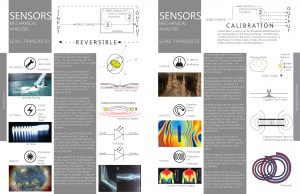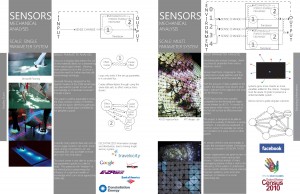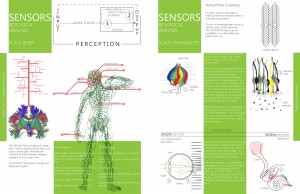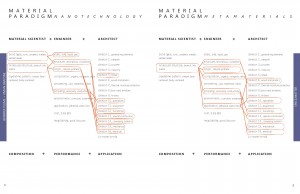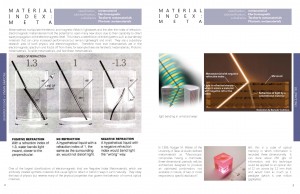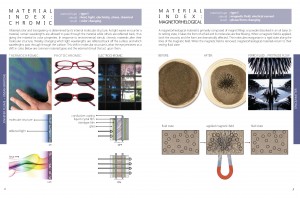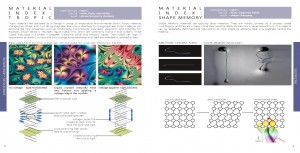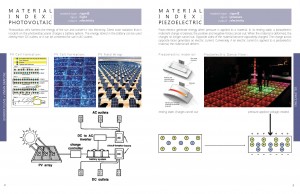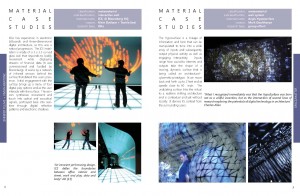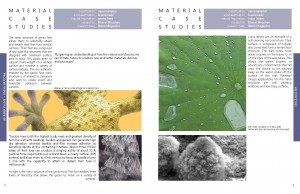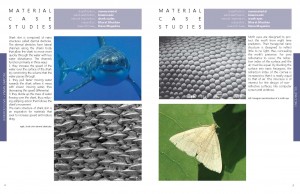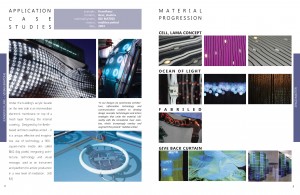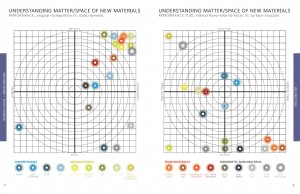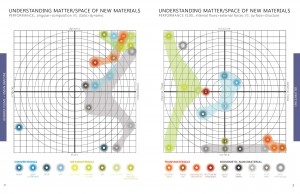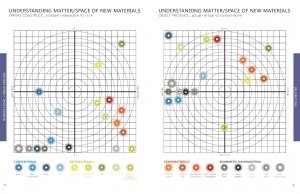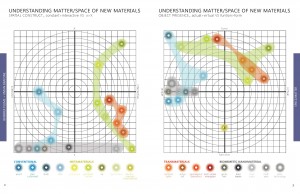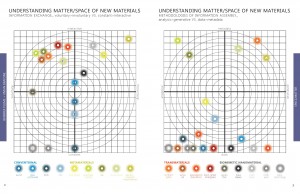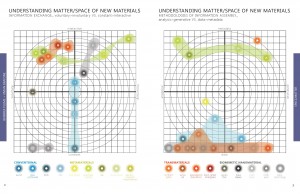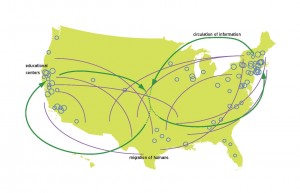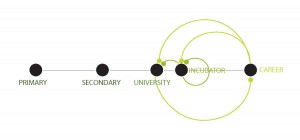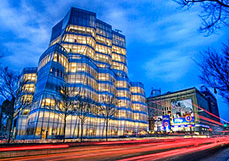RESEARCH
Sensors
Pre-Midterm Bratone+Plume
PreMidterm_Presentation Spreads : download the presentation slides here.
We first examined existing material paradigms of the fields most closely associated with material studies.
Material scientists have a bottom up approach to materials; they examine material composition and allow that to determine material properties. Engineers approach materials from the top down; they determine performative requirements and select materials based on how well they fit these requirements. Architects categorize materials based on predefined categories of material systems and applications. This type of classification biases traditional materials and does not lend itself to new materials that do not easily fit into predefined categories. Using three categories of new materials (nanomaterials, transmaterials, and metamaterials) we tried to map intersections between these categorizations and project a future classification that could be applicable across disciplines.
We compiled an index of some of the overarching categories of materials that exist within our fields of interest:
We also looked into specific projects that apply these emerging material technologies:
The following graphs attempt to map these materials against common parameters and against each other:
The Future of Education
Kang + Fitzgerald
Seeper
(CLICK ON IMAGES FOR LINKS)
Seeper is an arts and technology collective. Founded in 1998 seeper’s nucleus is the pursuit of essence. Exploring natural user interaction and ubiquitous computing to create multi-sensory experiences and memories.
The integration of computers into our lives has seen us learn and develop physical skills and languages centered around the use of devices such as the mouse and the keyboard. Now we have the opportunity to reflect on this history and realise that we can interact with computers in much more intuitive and expressive ways. At seeper we are exploring the use of gestural air and touch integration to allow a new range of interfaces devices and experiences for users.
As one of the final events for the Vimeo Festival + Awards, and thanks to the generous support of the new Honda CR-Z Sport Hybrid, you are getting treated to some of the most technologically advanced eye candy in the world. If you’ve never seen projection mapping before then you are in for a sweet, sweet surprise. Seeper, the talent behind Battle of Branchage will be bending minds with a projection performance that will transform the facade of the iconic Frank Gehry designed IAC building in ways you never thought possible.
Nanofactories Explained
K. Eric Drexler is considered a founding figure for modern ideas about manufacturing nanomaterials. Though the idea of a nanofactory has been a subject of his writing since the 1980’s, his book “Nanosystems: Molecular Machinery, Manufacturing, and Computation” sets forth some good basic definitions of what molecular manufacturing is. As published:
Molecular manufacturing: the construction of objects to complex, atomic specifications using sequences of chemical reactions directed by non-biological molecular machinery.
Molecular Nanotechnology: comprises molecular manufacturing together with its techniques, its products, and their design and analysis; it describes the field as a whole.
Mechanasynthesis- mechanically guided synthesis- is fundamental to molecular manufacturing; it guides chemical reactions on an atomic scale.
Drexler’s blog (linked through the image above) catalogs and comments on developments in nano world.
Linked below is a video (which despite the graphic quality is described by Drexler as being relatively accurate as far as the basics of nano manufacturing is concerned).
Application: NanoBiomimetics
NanoBiomimetics looks to nature for inspiration for nanomaterial structures that have many beneficial qualities.
– Self-cleaning materials: The study of the nano surface structure of lotus leafs and water-striders (insects) has generated interest in materials that reduce contaminant build-up just in the way they are structured.
– Stickiness: gecko and spider feet are structured for reversible dry adhesion (vs. reversible wet adhesion, as seen in fly feet, or permanent wet adhesion, as seen in everyday tapes and glues). The structure of gecko feet is such that surface area is maximized to allow adhesion to many surface types.
Drag minimization: The lateral structure of shark skin (dermal denticles) reduces drag on the shark, allowing it to move more quickly and with less water disturbance. This nano-structure is the the inspiration for the fabric and design of the Speedo LZR racer swim suits (to which many of the record-breaking times were attributed during the 2008 Olympics).
Anti-reflectivity: The hexagonal structure of the moth eye has led to an interest in nano-faceted surfaces that would have similar anti-reflectivity effects. This structure is of particular interest for the manufacturers of computer screens.
In all cases, these dramatic effects are created with hierarchical structuring at all levels. Nature adapts form and structure to function while optimizing material usage.
Click the image for the full article.
Application: Nanomedicine
Highlights:
nanobiotechnology- science and technology of the modulation of cell function on the engulfment of a nano-sized entity by the cell.
nanomedicine- field of science based on cellular uptake of targetable nano-sized materials that can be used in drug delivery, imaging and diagnostic purposes, biomarkers, and ex-vivo and in-vivo sensors.
Nanomedicine deals with nanomaterials between 10-100 nm in diameter.
Nanomedicine has the potential to reduce drug dosage by a couple thousand times that of a normal drug therapy dosage.
Click the image to link to the full article.
Museum
A timeline showing the evolution of Museums starting from the Greek Museion to the contemporary museums today. The shift from private to public occurs at the end of the 18th century and start of 19th century.
The four main factors that feed into the new idea of “EDUTAINMENT” within museums today. Museums today focuses on education AND entertainment.
A quick study of what museums require and possibly need in order to have a “successful” museum design.
Research Book
Research Book done in Thomas Mical’s Studio, Spring 2009
“The history, theory, and debate behind museums, archival systems, and research institutions.”
Just as a reference.
